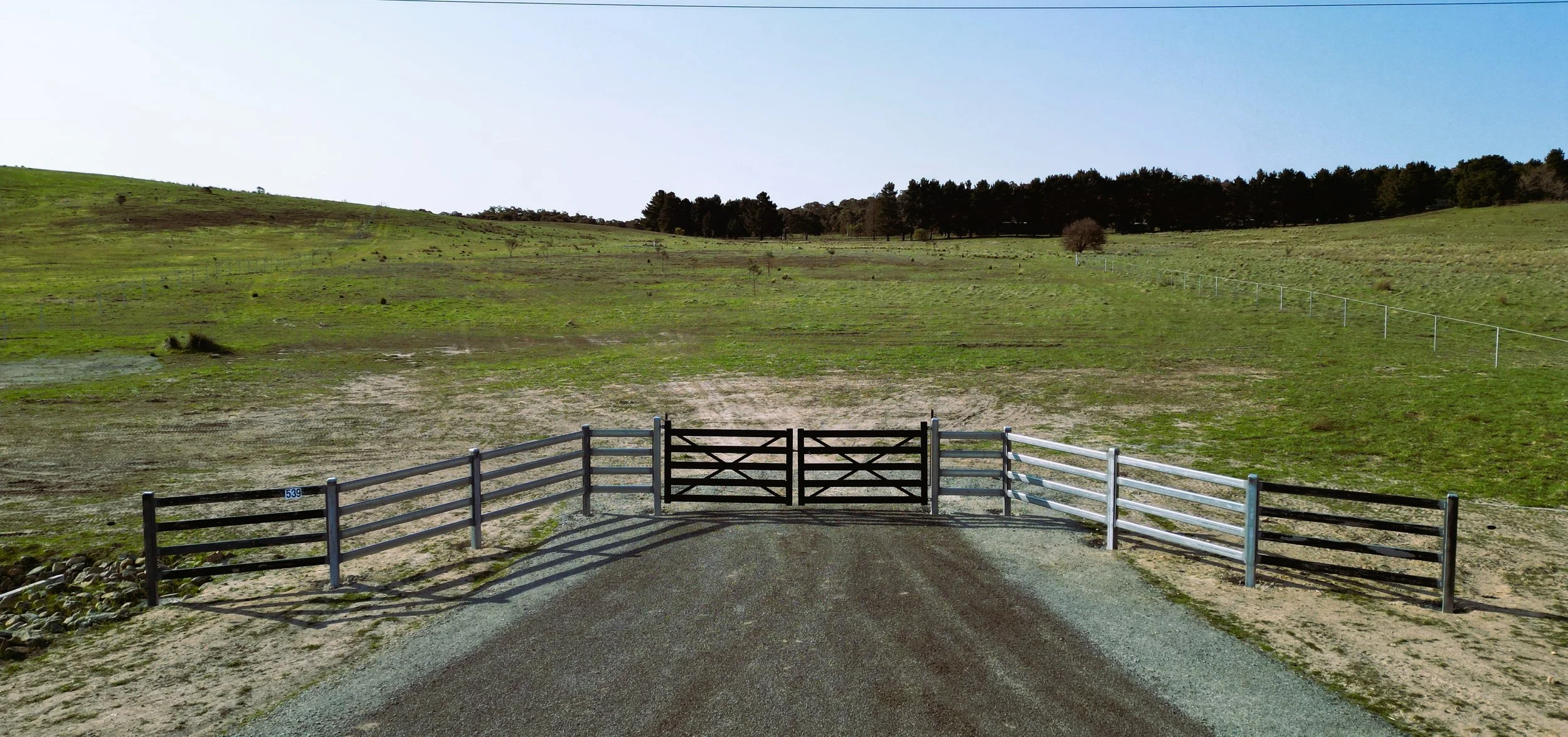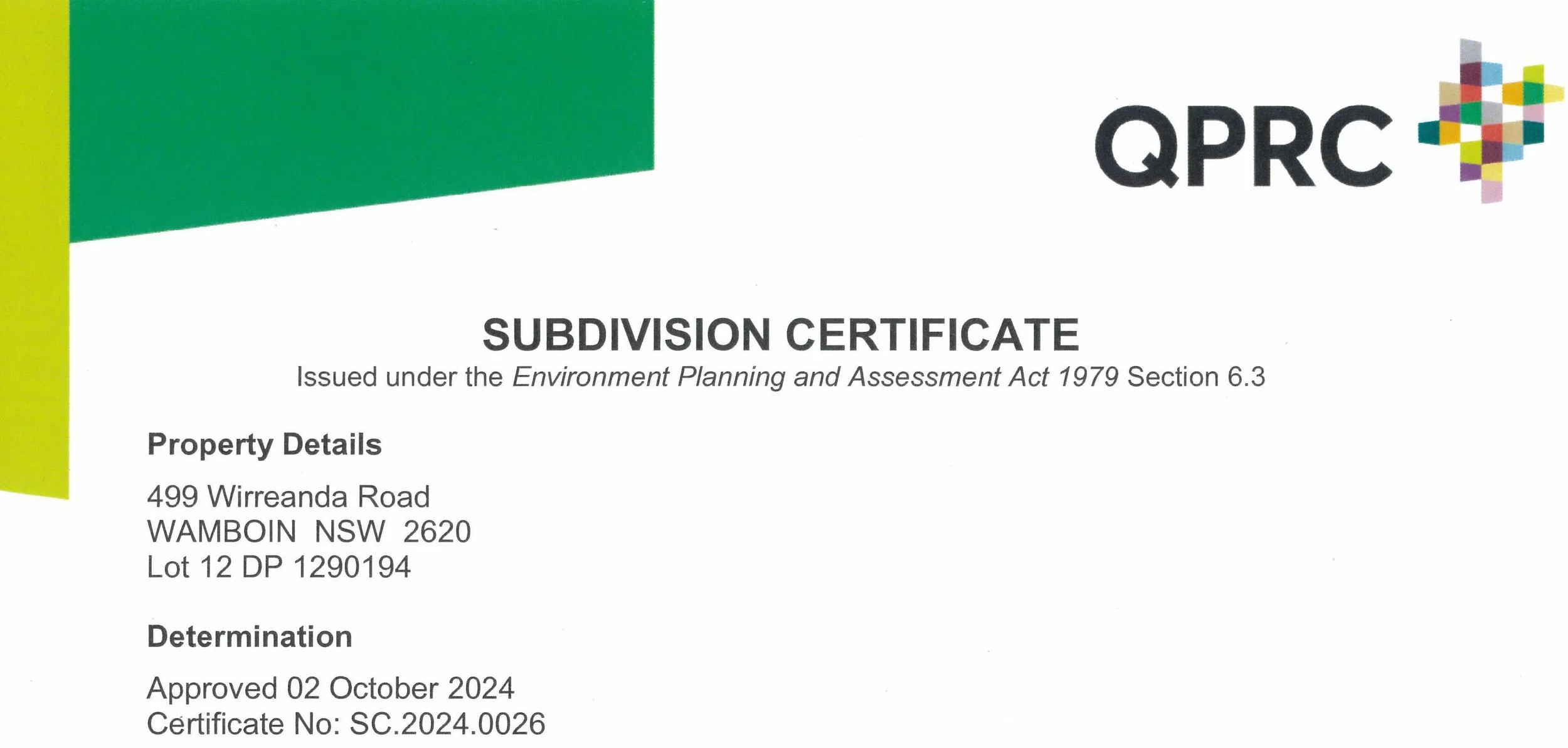
Wirreanda has been run as part of sheep and cattle stations for more than a century. In the 1980s it was transferred into a company, Nessfind Pty Ltd, by one generation of farmers handing over to the next. Nessfind is still owned by one member of that next generation.
To find the first connection of the family to the property, you need to look back to the people that first marked it out, applied to the government of the day to be granted title and settled there. These people were known as “selectors”.
The selector of most of the area that is now Wirreanda was a Thomas Smith. Details of who Thomas Smith was are in the article here Wamboin Community Association ~ Local History
He made his home at Wirreanda, or Top Flat as it was known, around 1850.
We believe the site of Thomas Smith’s home was on Lot 12 where the trees pictured overleaf remain as a reminder. The 1881 Parish Map showing Thomas Smith as the owner of Wirreanda appears below.
When Thomas’s mother Jane was an elderly widow she moved in with Thomas and his wife Ann at their home at Wirreanda. She eventually died there in 1865. Jane was the 4th great grandmother of the current owner of Nessfind.
Our connection to the first European inhabitants of Wirreanda and the generations since, explains our approach to developing the land.
We are not developers looking to make a quick dollar. This subdivision has been long in the making. We were first granted a DA twenty years ago.
We didn’t rush in.
We took our time, because it takes time to get things right.
And the decisions we have made, the materials we have used and the methods we have employed have all been with the long term in mind.
Fabricated heavy galvanised steel gates and galvanised steel entrances strong enough to handle the inevitable bumps and built to last for generations. Galvanised steel fences, with plain wire and a one hot wire. The plain wire allows wildlife to move through the fences without damaging them, and hot wire discourages stock from pushing on them. That means your fences will last for decades and will need minimal maintenance in the meantime.
High capacity bores and a decent sized deep dam, because we know about droughts and bushfires.
Open country to allow you to plant trees where you want them, because we know you don’t want trees in the wrong places.
Improved pasture, because livestock need grass in winter when native grasses are dormant.
But we have made mistakes along the way.
The biggest mistake we made was to sell Stage 1 lots before they were complete.
The problem with doing that is that we were asking buyers to take on the risk, that despite our best efforts, timing may not go to plan.
This was certainly the case with Stage 1 where we signed a civil works contract that promised completion by 18 May 2021. Then there were all sorts of delays: Covid, weather, supply constraints to name a few. Completion finally occurred on 29 May 2023, more than two years later than specified in the contract.
Our mistake was that we pre-sold lots during 2020, not anticipating the delays. That meant our purchasers had to wait till the works were complete and the title issued before they were able to lodge their DAs with Council. And while they were waiting construction costs kept rising. This uncertainty caused a great deal of stress.
We did not want to take the risk of causing these sorts of problems for our purchasers for stage two, and for that reason we held off marketing until we had absolute certainty of being able to settle contracts within normal terms - ie. 42 days of contract.


